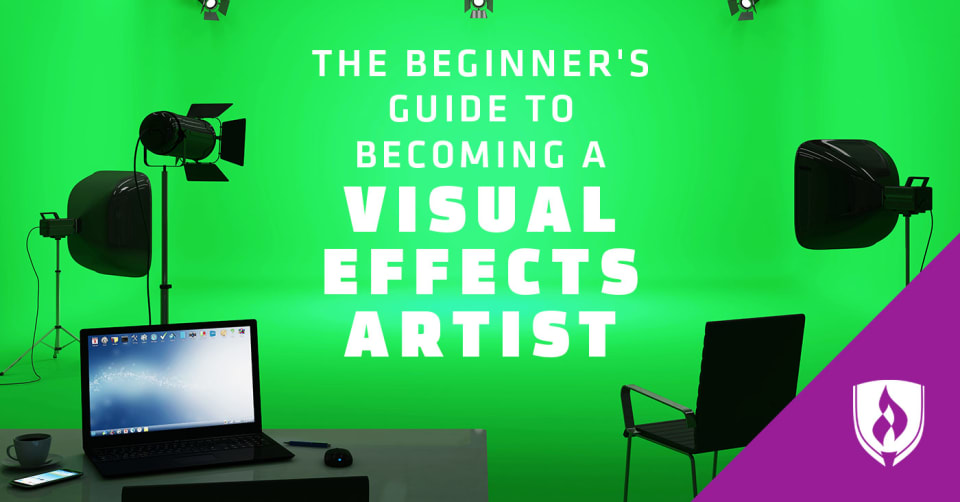
From Jurassic Park to Interstellar, Avatar to Inception, visual effects (VFX) artists have drastically changed the film industry for the better. It’s no surprise that you want to join the ranks of these creative professionals who breathe life into the worlds and characters that were previously just in our imaginations.
What would Lord of the Rings be without the epic battles and magical creatures? How would we ever believe in the Star Wars “force” without the glowing lightsabers and intergalactic wars? VFX has made films what they are today, and you could be part of creating that movie-magic. You just need to know how to become a visual effects artist.
Whether you’ve been interested in VFX for a while or are just getting introduced to the field, give this guide a quick glance so you know more about how to become a VFX artist and the path that lies ahead. If you’re a tech savvy, imaginative movie fanatic, then there’s a good chance reading this article is just the beginning.
A quick intro to VFX
You can think of visual effects artists as creative engineers. They are responsible for the out-of-this-world and impossible-to-film scenes and characters in your favorite shows and movies. Depending on the size and budget of the project, VFX artists may play a more general role or specialize in a particular category, such as characters or backgrounds.
VFX artists, sometimes referred to as multimedia artists or animators, have a variety of responsibilities, which will vary depending on the position. Some common duties, according to the Bureau of Labor Statistics (BLS), include:
- Using computer programs and illustrations to create graphics and animation
- Working with a team of animators and artists
- Researching upcoming projects to help create realistic designs or animations
- Developing storyboards that map out key scenes in animations
- Editing animations and effects based on feedback from directors, clients or other team members
Your guide to becoming a VFX artist
If the job duties of VFX artists excite you, you’re probably wondering how you can get in on the action. While there is no strict pathway into the field, there are a handful of steps you’d be smart to take in your pursuit of becoming a visual effects artist.
Keep reading as we highlight some of the important factors that could help propel you into the profession.
Skills needed to become a VFX artist
After reading about the roles and responsibilities above, it’s probably clear to you that visual effects artists must possess a wide range of abilities. It takes a unique blend of technical skills and creative prowess to bring complex concepts to life on the big screen.
| Top technical skills | Top transferable skills |
|---|---|
| Adobe Creative Suite | Creativity |
| UX wireframes | Communication |
| Prototyping | Collaboration |
| User interface (UI) design | Research |
| JavaScript | Organization |
| MAYA | Attention to detail |
| 3D modeling | Problem solving |
If you can relate to a handful of the transferable skills listed above, chances are you may already naturally inclined to be a visual effects artist. And don’t be intimidated by the technical skills highlighted. Many of these skills are covered in the curriculum of an Animation degree program.
Education and training needed to become a VFX artist
With the amount of complex work that goes into creating visual effects, it’s not surprising that a Bachelor’s degree is typically required to land a job, as noted by the BLS. The most common degree fields are Animation, Computer Graphics or Fine Arts.
Our job analysis data also supported the importance of acquiring formal education. In fact, of the 3,000 postings that listed education preferences, 87 percent were seeking candidates with at least a Bachelor’s degree.2
Additional learning and development
Much like other technology-fueled careers, the field of animation and visual effects is always constantly in flux. New trends, techniques and technologies are always surfacing and professionals must keep a pulse on this evolution.
This means the learning won’t stop once you have your diploma in hand. You’ll need to be motivated to improve and eager to develop new skills and adopt new strategies.
Career information and work environment
You obviously want to pursue a career that interests you—one that leaves you feeling fulfilled at the end of every workday. But the practical side of you wonders whether becoming a visual effects artist will provide the stability and financial security you’re seeking.
Animation and visual effects jobs are expected to undergo stable growth in the coming years, according to the BLS. Employment is projected to grow six percent, which is about as fast as average for all occupations.
If you’re curious about the typical work environment for VFX artists, it will vary greatly depending on the position. More than half of all workers in this field were self-employed in 2014, according to the BLS. This means you’ll have the opportunity to work as a freelance designer if you choose—you’ll have the ability to set your schedule and workload, and be responsible for more administrative business tasks.
The other option is to take more of a traditional position within a studio or company. VFX artists work a standard business schedule for the most part. However, much of the work is driven by strict deadlines. When deadlines are approaching and work needs to be finished, you may be required to work nights and weekends.
Making dreams reality
A visual effects artist is all about making imaginative ideas come to life—making fantasy seem like reality. Now it’s your chance to make your own dreams of becoming a VFX artist come true. You’ve already got the passion and curiosity, and you likely have some of the necessary qualities. All that’s missing is the fundamental knowledge and hands-on training that comes from a formal education.
Check out our Animation and Motion Graphics program to learn how we can help you acquire the missing piece.
RELATED ARTICLES:
1Burning-Glass.com (analysis of 7,703 VFX job postings, March 01, 2016–February 28, 2017).
2Burning-Glass.com (analysis of 3,006 VFX job postings by education level, March 01, 2016–February 28, 2017).
3Bureau of Labor Statistics, U.S. Department of Labor, Occupational Outlook Handbook, [information accessed February 2017] www.bls.gov/ooh/. Employment conditions in your area may vary.
Advertisement: This article was created by Rasmussen University to promote its graphic design program. Please see www.rasmussen.edu/degrees for a list of the programs we offer. Rasmussen University is a regionally accredited private college and Public Benefit Corporation.




